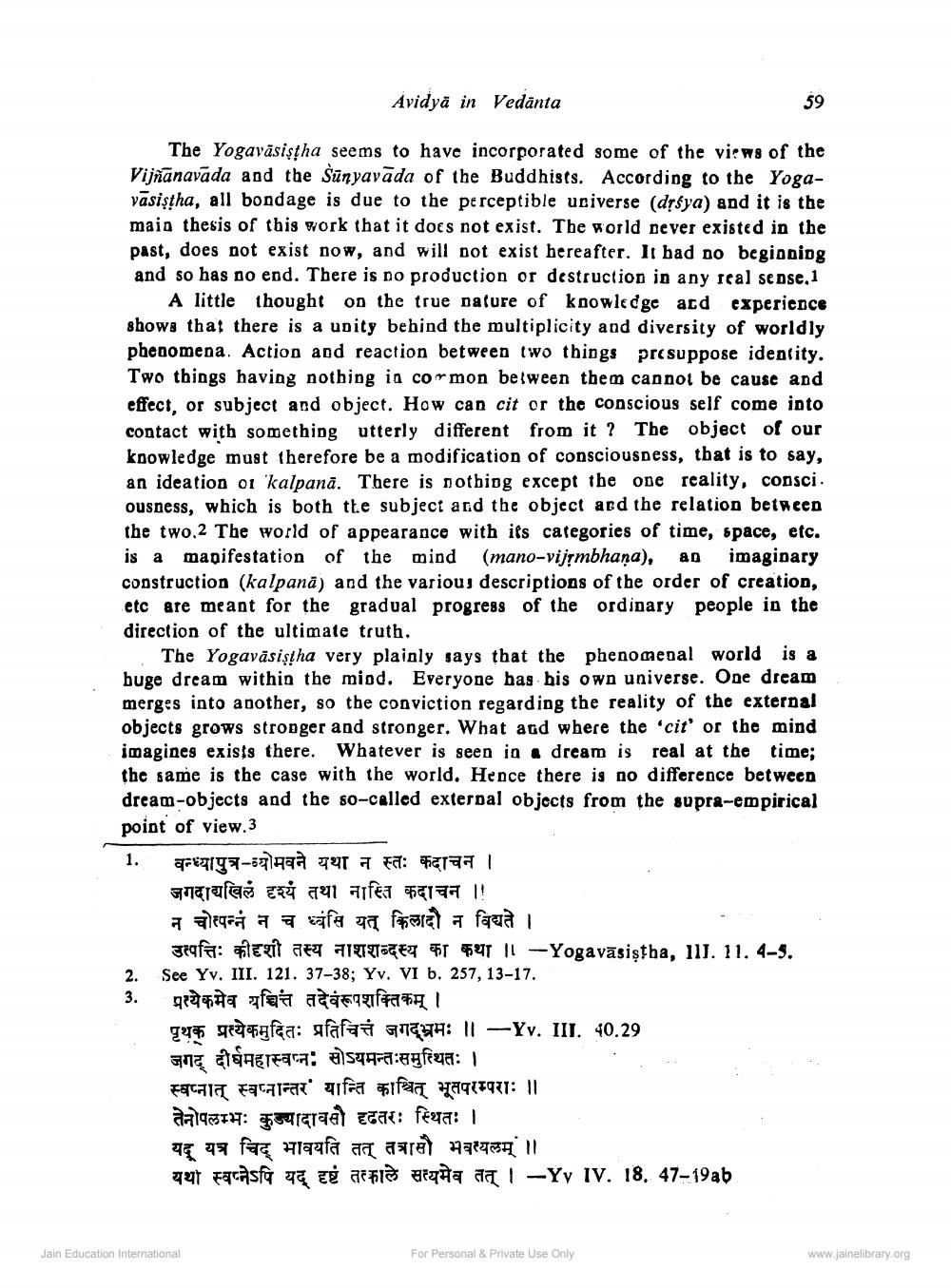________________
Avidyā in Vedānta
59
The Yogavāsiştha seems to have incorporated some of the views of the Vijñanavāda and the Sūnyavāda of the Buddhists. According to the Yogavasistha, all bondage is due to the perceptible universe (drsya) and it is the main thesis of this work that it does not exist. The world never existed in the past, does not exist now, and will not exist hereafter. It had no beginning and so has no end. There is no production or destruction in any real sepse, 1
A little thought on the true nature of knowledge acd experience shows that there is a unity behind the multiplicity and diversity of worldly phenomena. Action and reaction between two things presuppose identity. Two things having nothing in common between them cannot be cause and effect, or subject and object. How can cit or the conscious self come into contact with something utterly different from it? The object of our koowledge must therefore be a modification of consciousness, that is to say, an ideation or 'kalpanā. There is notbing except the one reality, consci. ousness, which is both the subject and the object and the relation between the two.2 The world of appearance with its categories of time, space, etc. is a manifestation of the mind (mano-vijīmbhana), ao imaginary construction (kalpanā) and the various descriptions of the order of creation, etc are meant for the gradual progress of the ordinary people in the direction of the ultimate truth.
The Yogavāsiştha very plainly says that the phenomenal world is a buge dream within the mind. Everyone has his own universe. One dream merges into another, so the conviction regarding the reality of the external objects grows stronger and stronger. What and where the cit' or the mind imagines exists there. Whatever is seen in a dream is real at the time; the same is the case with the world. Hence there is no difference between dream-objects and the so-called exterpal objects from the supra-empirical point of view.3
वन्ध्यापुत्र-व्योमवने यथा न स्तः कदाचन । जगदाखिलं दृश्यं तथा नास्ति कदाचन ।। न चोत्पन्नं न च ध्वंसि यत् किलादौ न विद्यते । grafa: legit att a1TTEZT $T $91 11 -Yogavāsiştha, 111. 11. 4-5. See Yv. III. 121. 37-38; Yv. VI b. 257, 13-17. प्रत्येकमेव यच्चित्तं तदेवंरूपशक्तिकम् । 99% g afga: afafa F ur: ll -Yv. III. 40.29 जगद् दीर्घमहास्वप्न: सोऽयमन्तःसमुस्थितः । स्वप्नात् स्वप्नान्तर' यान्ति काश्चित् भूतपरम्पराः ॥ तेनोपलम्भः कुज्यादावसौ दृढतरः स्थितः । यद् यत्र चिद् भावयति तत् तत्रासौ भवत्यलम् ॥ 491 Facasa 20 th acties Hyaa aa ! -Yy IV. 18. 47-19ab
Jain Education International
For Personal & Private Use Only
www.jainelibrary.org




